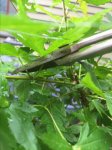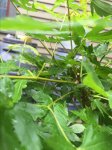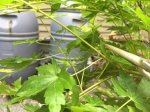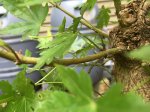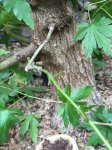markyscott
Imperial Masterpiece
First thing to do is thin the leaves. Focus on the strong extending shoots. On the top, remove both leaves for the first couple of nodes on the shoot. Then remove one leaf at each node. Generally one leaf will be high and one will be low. For branches on the top of the tree, remove the upper leaf. On the bottom branches, remove the lower. But leave the weak interior growth alone. Weaken the strong and strengthen the weak. Do this over the whole tree.
